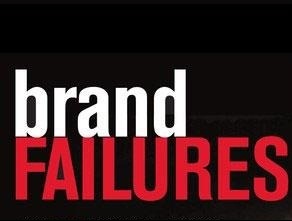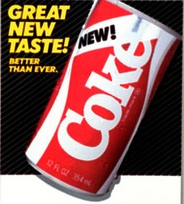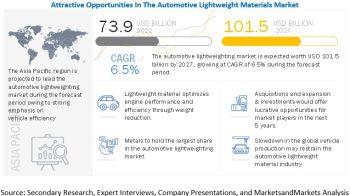

Old hands in the business world have not forgotten about probably one of the biggest blunders of their times, which goes by the name of the New Coke. Reportedly in 1985, when the company was on the verge of completing its centennial anniversary (in 1986), the company took on a huge gamble to target the youths and pull them away from their leading competitors. Several wrong steps and misleading marketing research calculations diminished the impact of years of hard work that their researchers put in to develop a different taste and appearance for the original Coke. Although the company moved past the event in high spirits, launched the popular line of Classic Coke and many market players do not even remember it, the event still goes by as a humbling example of how market research should not be performed.
Brief Background
As reported by big media houses like BBC, NBC News and the company’s own website, in mid-80’s key decision makers of the Coca-Cola Company decided to introduce a new beverage product, targeting the youth, which was then driven towards their largest competitor, Pepsi. As the company took off, they realized it was the taste that stood out to be the crucial cause for the decline of their product, which was otherwise ruling the roost. Determined to launch revamped version of their original drink, named as New Coke, the company started running extensive market research along with product development and taste tests on the side.
In United States of America, the company ran around 200,000 blind product taste tests, wherein majority of participants were in favor of the revamped version. While the product was received well in the market, the company faced a huge backlash at the hands of a large number of traditional Coke drinkers, who were emotionally attached to the original formula of the product. This dramatic turn from early acceptance to blatant uproar proved to be a huge blunder for the company.
As the NBC News reports, the entire set of events made the company launch its original formula once again in order to get back its face and quickly fading reputation. The point to note here is the swift move that the company made to call off the entire range of newly launched beverage and marketing the original formula in much more appealing way. Veteran researchers and expert witnesses of this event have some solid reasons to blame the market research tactics of the company, which left some valuable lessons for the future generations of businesses across the world.

What went wrong and how you can avoid it?
While the Coca-Cola Company as well as the business world has recovered from the shocker, many recall this incidence as a valuable lesson. As several experts claim, the real twist in the tale was the failure of focus groups, understanding customer mindset and sentiments. Despite spending time, money, skills and resources in collecting data, the business researchers failed to understand the real needs of the customers, which turned out to be a disaster. Although the customers were considered for their decisions, judgments and preferences, there were several cracks in the whole process.
- Misleading Declarations
Not to be mistaken that the company tracked opinions of no less than 200,000 customers and asked them to respond to the changing formulation of the brand. However, as news reports claim, they were not told about the innate change in terms of the packaging and taste, both of which were the strong selling points for the company. Keeping your customers of potential changes like this could mislead them from the basic motive of the project and damage the reputation and ultimate goal of your marketing research project. When you are researching on a certain group of customers, it is essential to build trust and strong communication channel with them, which comes from opening up about the potential changes.
- Customer Sentiments
Coke was first launched in 1886, which means 99 years before this episode took place. As experts claim it, with the brand that have been there for generations, businesses needs to understand the basic emotions of the customers that are generally involved with the physical properties like appearance, taste and symbolic character of that brand. If not, it could evoke psychological resistance amongst the customers, which deepens the issue of brand reputation and dropping sales in core marketplaces as well.
- Customer Buying Pattern
Rather than trusting the traditional market research phenomenon (the 80-20 rule), the company decided to weigh all the responses equally. Since not all the customers have same mentality, emotions or buying preferences, they failed to understand this basic pattern. When it comes to understanding what customers demand, understanding the innate reasons behind how and why your customer shops holds numerous clues about how you should reform your product or introduce it to a potential marketplace.
Careful observations about the basic response of your customers towards similar products, participations in focus groups and modern techniques like psychological analysis may prove helpful for the businesses to avoid any serious mistakes.
Article’s Source :
http://www.bbc.co.uk/learningzone/clips/market-research-and-branding-mistakes/12258.html
http://www.nbcnews.com/id/7209828/ns/us_news/t/it-seemed-good-idea-time/

